Abstract
Conversion to CO2 upon incubation in aerobic soil is one of the standard test procedures to assess biodegradability. It may be measured with unlabeled test compounds in biometer flasks. In this case, the background CO2 evolution by unamended soil is subtracted from the CO2 evolution by the amended soil and the resulting net CO2 evolution becomes the measure of biodegradation. Alternately, 14CO2 release from radiocarbon substrates is measured to assess biodegradability. Both approaches measure ultimate (complete) biodegradation and bypass the theoretical and technical limitations of residue analysis. This report examines the underlying assumptions that, except for carbon content, conversion percentage to CO2 is relatively independent of chemical composition, that CO2 production is proportional to the amount of added test compound, and that the background CO2 evolution of the soil is not influenced by the test substance. Work with unlabeled and radiolabeled substrates proved the first two assumptions to be essentially correct. However, more than half of net CO2 production may represent the mineralization of biomass and soil organic matter, some of it unrelated to the test compound. The soil microbial community in its nongrowing steady state appears to convert a much lower percentage of a radiocarbon substrate to 14CO2 than a growing soil community that responds to a substantial substrate addition. These findings may help to improve test methods and may aid in the interpretation of test results.
Full text
PDF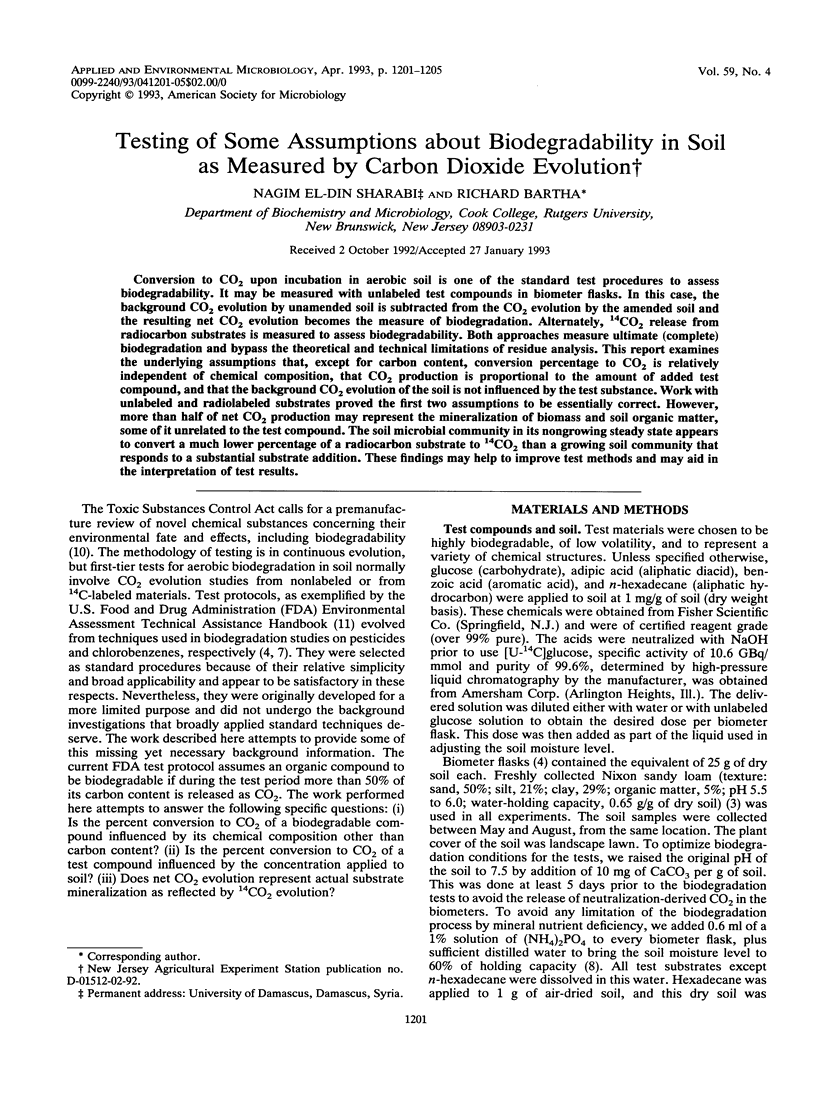
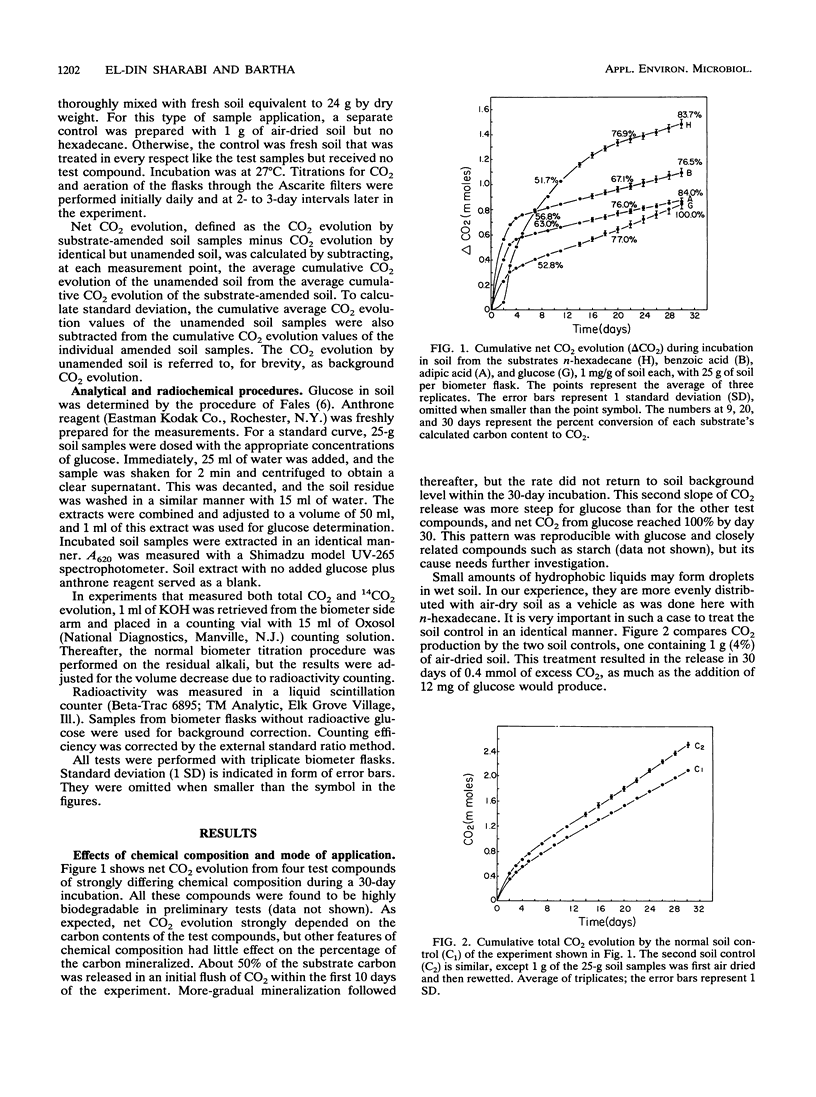
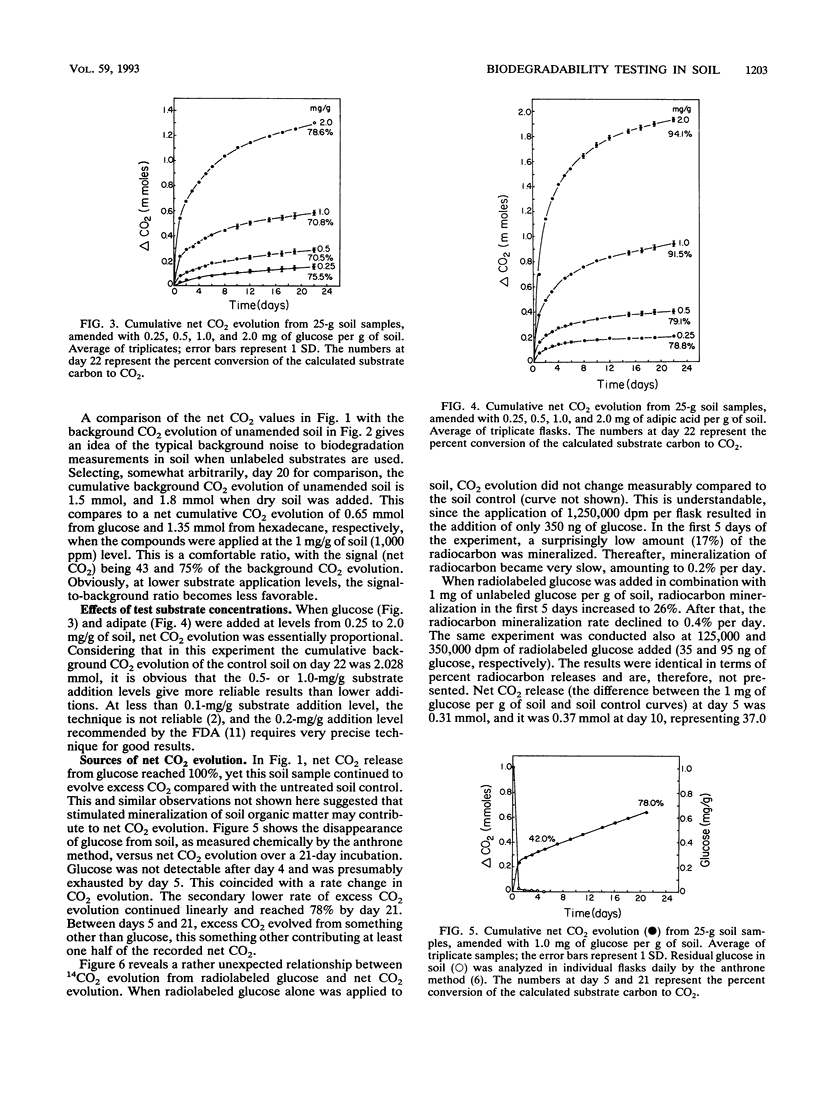
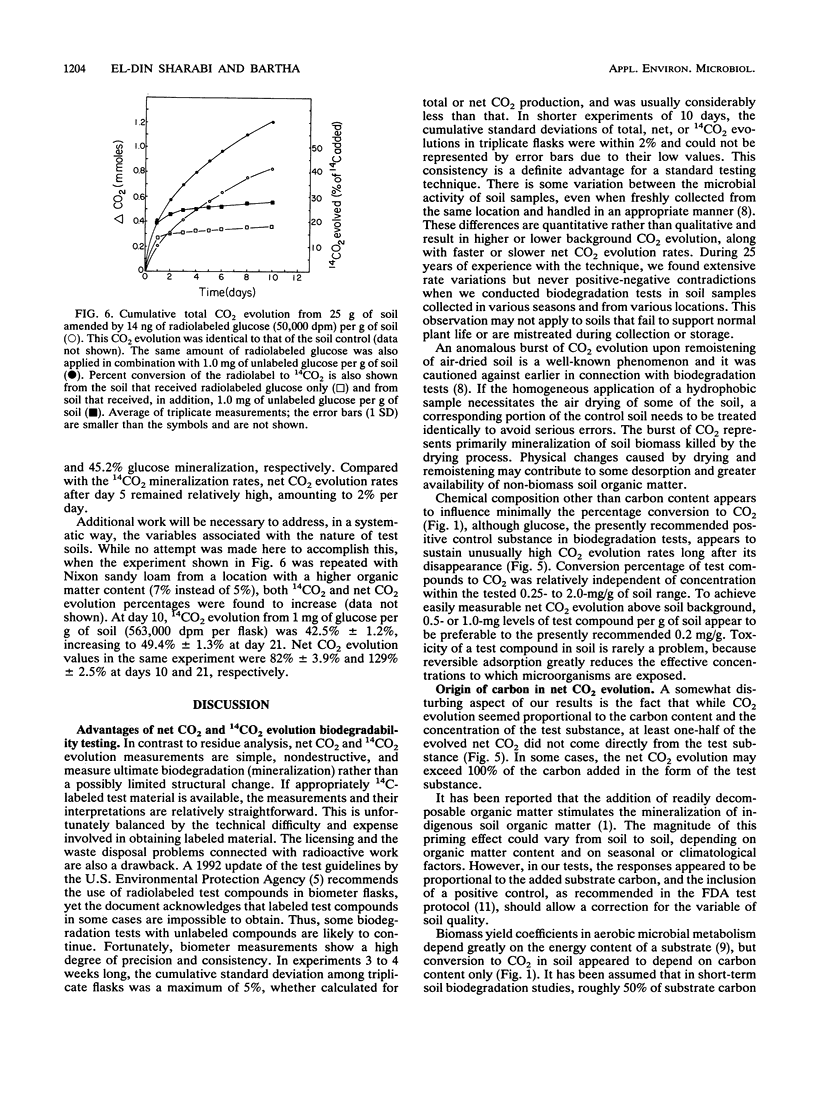
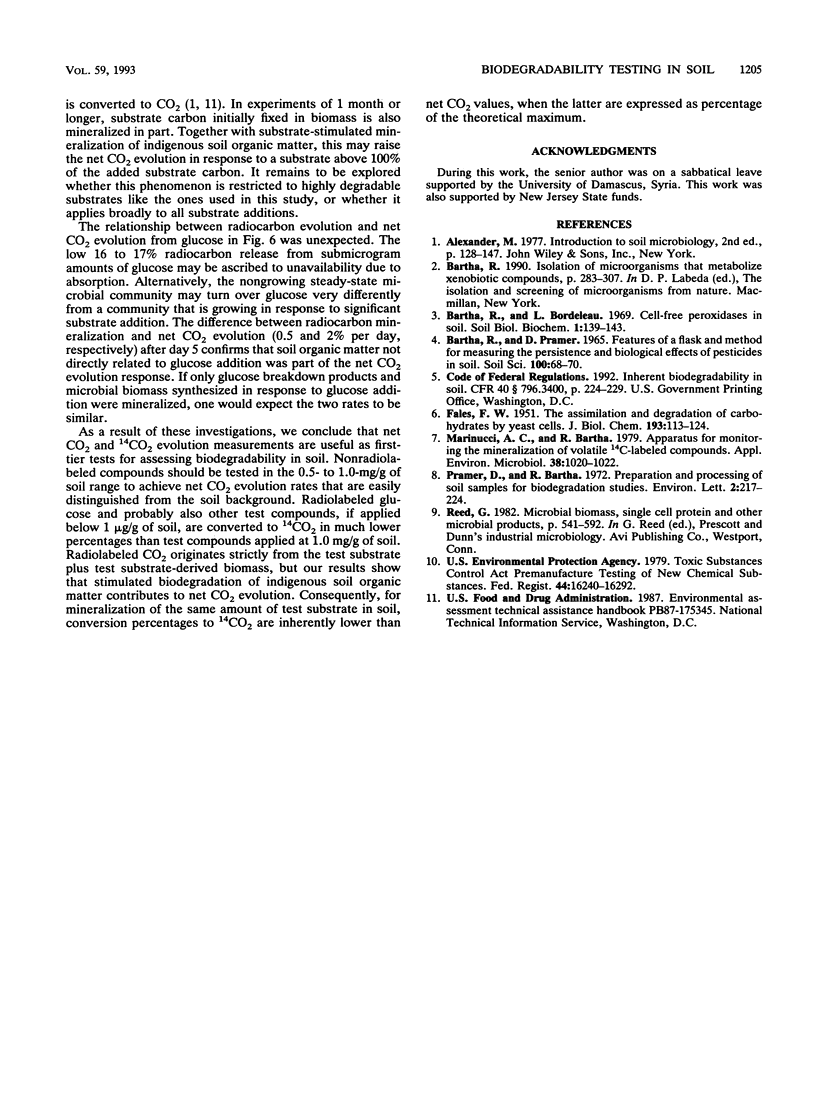
Selected References
These references are in PubMed. This may not be the complete list of references from this article.
- FALES F. W. The assimilation and degradation of carbohydrates by yeast cells. J Biol Chem. 1951 Nov;193(1):113–124. [PubMed] [Google Scholar]
- Marinucci A. C., Bartha R. Apparatus for monitoring the mineralization of volatile C-labeled compounds. Appl Environ Microbiol. 1979 Nov;38(5):1020–1022. doi: 10.1128/aem.38.5.1020-1022.1979. [DOI] [PMC free article] [PubMed] [Google Scholar]


